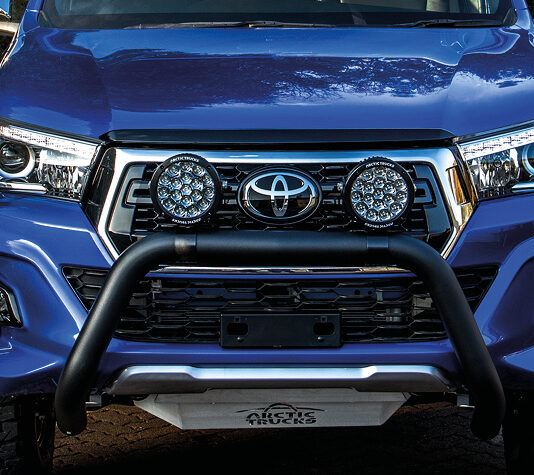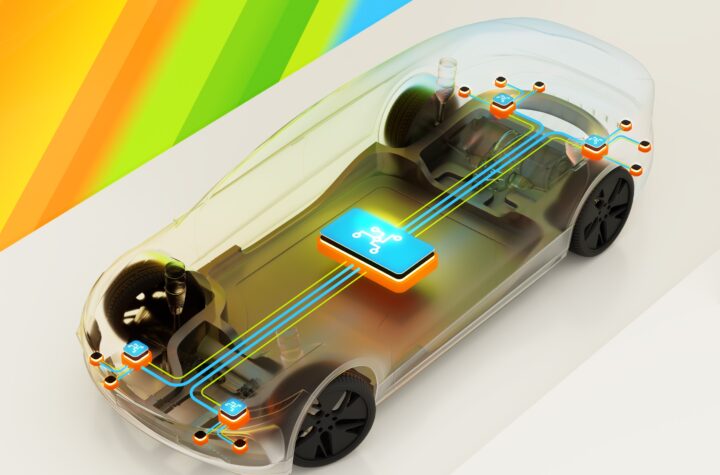
 Chances are, if you see a car coming at you or driving in front of you, you’re looking at Osram Sylvania lighting technology. 75 percent of the cars in production today have some type of Osram lighting, Halogen, HID/Xenon or LEDs, both exterior and interior.
Chances are, if you see a car coming at you or driving in front of you, you’re looking at Osram Sylvania lighting technology. 75 percent of the cars in production today have some type of Osram lighting, Halogen, HID/Xenon or LEDs, both exterior and interior.
Automotive lighting drives about 50 percent of Osram’s business globally and of that, they supply 75 percent of NAFTA-produced vehicles and 40 percent of the global light vehicle market.
The top dog in automotive lighting is also a large manufacturer of LED’s for the automotive industry currently shipping 3 million units per day.
It’s these little light emitting diodes, or LEDs that are driving the future of the industry. It’s a life-of-the-vehicle source,” says James L. Johnson, Executive Vice President and General Manager for Global Automotive Lighting. “LED’s will not burn out, so you won’t have the trouble of replacing them. The consumer benefits from that point.”
But the benefits to the OEMs can be much greater. LEDs use 1/8 of the power of an incandescent bulb. On top of that a typical rear stop function an incandescent bulb needs to generate about 400 Lumens of energy to net 75 lumens of energy by the time it gets through the red lens. A red LED only needs to generate 75 lumens because you don’t need the red lens.
From a safety standpoint, a rear incandescent stop lamp takes 250 milliseconds to light up once the brake pedal is depressed. LEDs light up in 20 milliseconds allowing for an extra 24 feet of stopping distance at 50 mph.
Since LEDs are electronically-controlled semiconductors they are a more controllable light source that can be changed by the amount of power applied to it. The Ford Bronco concept shown at this year’s Detroit International Auto Show features a taillamp system that gets brighter the harder you press the brake pedal, signaling to the driver behind you how fast they need to stop.
| OSRAM TECHNICAL INFORMATION | |
| Input power | 4.8 Watts |
| Output power | 3.5 watts |
| Input voltage | 9 – 16 volts |
| Rated flux | 64 Lumens |
| Rated life | 5,000+ hours |
| Tail/Stop ratio | 1:10 |
| Ambient temp | -40 C – +60 C |
“We’re currently seeing a lot of styling trends where people want instant recognition of vehicles,” says Phil Rioux, Director of OEM Sales for Osram Sylvania.
Audi debuted a new A8 6.0 with the first application of LED Daytime Running Lights (DRLs) that are now mandated in Europe and Canada.
The Hella-manufactured headlamp features a module housing five LEDs arranged in a five-point pattern which gives the vehicle a unique signature.
While LEDs are just finding their way on to the front of the vehicle, many OEMs have adopted LED rear combination lamps on their higher trim levels. The technology is reserved for the higher trim levels mainly due to cost. Johnson says that a typical rear lamp assembly with an incandescent light source is $10 to $12. Replacing the lamp assembly with an LED array would triple the cost. A majority of the cost increase is driven by the design and engineering that’s necessary to produce a unique taillamp for a specific vehicle.
“That’s because you’re using it for styling and adding a high number of LEDs,” Johnson says. “That’s what’s driving your cost.” Osram has developed a technology that is designed to bring down that cost, making LED-taillamps an option on mid-level and lower-level vehicles.
The ‘LED Standardized Light Source’ does just that, standardizing LEDs similar to incandescent technology with an estimated cost savings of 50 to 60 percent over LED array lighting.v The unit, designed to interface with the vehicle’s 12-volt power supply, integrates the LEDs, power module and heat sink into one unit, providing designers with an industry-standard LED bulb that will simplify the design process for rear combination lamp assemblies.
The technology can also be utilized across several platforms, reducing development costs even further and reducing cycle times.
The standardized light source can be modified by changing the number of LEDs and altering the color to meet OEM specifications.
The standardized light source is designed as an indirect lighting system. Unlike other LED lighting systems, it is mounted inward toward a reflector.
Johnson says that simulations have shown that the system can still be packaged in the same space as LED array lamps.
The LED standardized light source will make its production debut on a vehicle that will be introduced in the summer of 2005.












More Stories
What You Need to Know Before Customizing Your VW Transporter
The Difference Between Coin and Token
From Gasoline Powered Cars To Electric Vehicles | Electric Moped Bike A Best Alternative